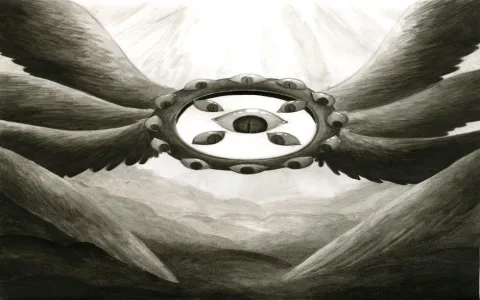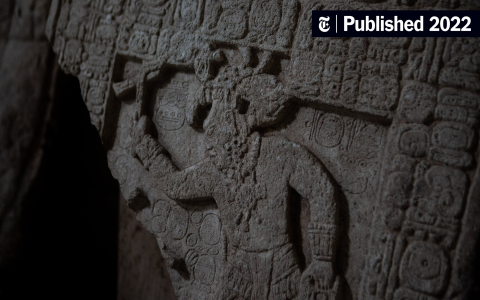This story is from Grimm’s Fairy Tales and is called The Owl.It is about a long time ago, in a small town, an owl accidentally flew into a family’s barn.It flew in when it was dark, and when it turned out to be light, it didn’t dare to go out-because owls are nocturnal animals, they are easily bullied by other birds when they come out in the daytime, so it hid in the corner of the barn.
In the morning, a servant came to the barn to get some hay, and suddenly saw an owl in the corner with big, bright eyes and a strange look.He was so frightened that he thought it was a monster and turned and ran, shouting, “Oh no! There’s a strange thing in the barn that can swallow a man in one bite!”
The master didn’t believe him and said, “You’re usually quite bold, why are you so scared now?” He decided to go and see for himself.But as soon as he entered the barn, he, too, jumped up in fear, pulled out his legs, and ran to call his neighbors, “Hurry! There’s a terrible beast in the barn, and if it rushes out, the whole town will suffer!”
The news got worse and worse.Soon the whole town was in a panic.Some took scythes, some axes, even the mayor came with his officials.They surrounded the barn like it was a war.

They sent a few “warriors” into the barn, but when they saw the owls, they all turned white with fear and ran out unable to speak.Finally, there was a self-proclaimed bravest man wearing armor, holding a spear, climbed the ladder up to prepare to deal with the “monster”.
But the owls were so frightened that they began to flap their wings, stare, and hoot, “Doo-eee! Doo-ee!” (That’s the owl’s cry.)
When the people outside heard this, they thought it was casting spells and releasing poisonous gas, and they were so frightened that they shouted, “Poke it! Poke it!”
The warrior’s legs went weak on the ladder, and he thought to himself, “Who can calmly say ‘Poke it’ at a time like this?” Eventually he couldn’t hold on and came down in disgrace.
No one dared to go back up.Everyone began to discuss what to do.Someone said, “When this monster screams, even the bravest people are poisoned, we can’t take any more chances!”
Finally the mayor came up with an idea: “Why don’t we pay the owner of the barn and then burn the barn down with the monster in it, and be done with it!”
Everyone agreed.So the fire was lit, the barn burned down, and the owl was gone.The story ends with the phrase, “Don’t believe me? Go ask yourself!”
What really happened behind the scenes?
Well, the truth is simple:
The “monster” is not a monster at all, it’s just an ordinary owl.**It’s just an ordinary owl.
It just got lost and flew to the wrong place because it was scared and didn’t dare to move.Its eyes are big because it wants to see clearly in the night; it hoots strangely because that is its normal hoot; it flaps its wings because it is nervous and wants to escape.
But when humans see something they don’t recognize, their first reaction is not to understand, but to fear.
The servant is afraid, the master is afraid, the neighbors are afraid, and finally the whole town is afraid.
Instead of observing it, instead of looking at it, instead of asking someone who knows about it – such as a hunter, an old man, or someone who has owned a bird – they simply think of it as a “dangerous monster”.
What’s even more absurd is that they would rather burn down a perfectly good barn and lose a lot of money than calmly open the door and let the owl fly away on its own.
A small matter that could have been resolved peacefully, because of collective fear and blind obedience, became a big action to “eliminate the monster”.
What does this story tell us?
1.What we don’t know doesn’t mean it’s dangerous.
We often encounter things in our lives that we haven’t seen before: new technology, strangers, different cultures, strange noises ……
Many people’s first reaction is, “Something’s not right about this!” “Something must be wrong!”
But the truth is, most things that are “strange” are just unfamiliar to us.
Like owls, rare for city people, but for country people, it’s just a common bird that comes out at night to look for mice to eat.
It’s not scary to be ignorant, it’s scary to be afraid instead of thinking.
2.When there are many people, it is rather easier to do wrong.
You see, at first it’s okay that the servant is the only one who is afraid.
But when the master is also afraid, then it spreads to the neighbors, then to the whole town ……
Everyone is adding to the fear: “It swallows people!” “It releases poison!” “The bravest people are dying!”
This is the “amplification effect of rumors.”
The more people there are, the easier it is to follow the others rather than see for yourself.
In the end, everyone collectively decides to burn the barn – a decision that no one even discusses seriously, just because “everyone thinks so”.
Sometimes the decision of the majority is the least rational.Sometimes the majority decision is the least rational of all.
3.The problem can’t be solved by “burning it down ”.
The mayor said, “Burn it, save yourself the trouble.”
It sounds decisive, but it’s actually an evasion.
Instead of trying to catch it, drive it away, or hire someone to deal with it, he chose the crudest way possible: destruction.
It’s like when we have a problem, some people’s first reaction is, “Delete it!” “Block it!” “Get rid of it!”
Instead of asking, “Why is it here?” “Can it be resolved peacefully?”
Solving the unknown with violence only makes us more ignorant.
4.Bravery is not about not being afraid, it’s about being able to face the truth.
The “warrior” in the armor seems to be the bravest, but he is actually scared to death.
A truly brave person is one who can calm down, take a closer look, and say, “Wait, this thing doesn’t seem so scary.”
Unfortunately, there’s no such person in the story.
Why does this story look like it was written by AI? How can we make it more human?
The original story, while interesting, reads like a “boilerplate story” in places:
- The plot moves too fast, from the discovery of the monster to the burning of the barn, with hardly a pause;
- The plot moves too fast, from the discovery of the monster to the burning of the barn, with barely a pause; the characters have no names, they are all “servant,” “master,” “warrior,” “mayor,” as if they were going through the motions.The dialog is stilted, such as “the monster” and “the mayor;
- Stiff dialog, such as “I know your kind”, not like a real person talking;
- Suddenly saying “ask me if you don’t believe me” at the end of the story is insincere and seems like a trick.
Humans write stories with more attention to detail, mood, and pacing.
For example:
- When the servant saw the owl, he could write about how fast his heart was beating and how his hands were shaking so much that he couldn’t hold the hay;
- When the mayor is in a meeting, someone can whisper, “Should we ask someone first?” But no one paid any attention to him;
- When the fire was burning, you can write that the owl fluttered its wings a few times at the end and no one saw it.
These details make the story more realistic and humane.
Summarize: What did we learn?
1.Don’t be afraid when you don’t understand something.
If you look at it more and ask more questions, you may find that it is not scary.2.
2.When there are many people, it is more important to stay awake.
others shout something, you also follow, may end up doing stupid things together.
3.You can’t solve a problem by just “destroying it”.
The real way is to understand it and deal with it, not to run away from it.4.
4.True bravery is being calm in the face of the unknown.
It’s not about wearing armor and carrying a spear, it’s about daring to take a step closer and say, “Show me what you really are.”
One last heartfelt word.
This story is not about owls,
it’s about ourselves.
Will we one day be afraid of a “different” person, thing or idea and cry “burn it down”?
Don’t forget –
Sometimes the so-called “monster”,
is just a night bird that has lost its way.




